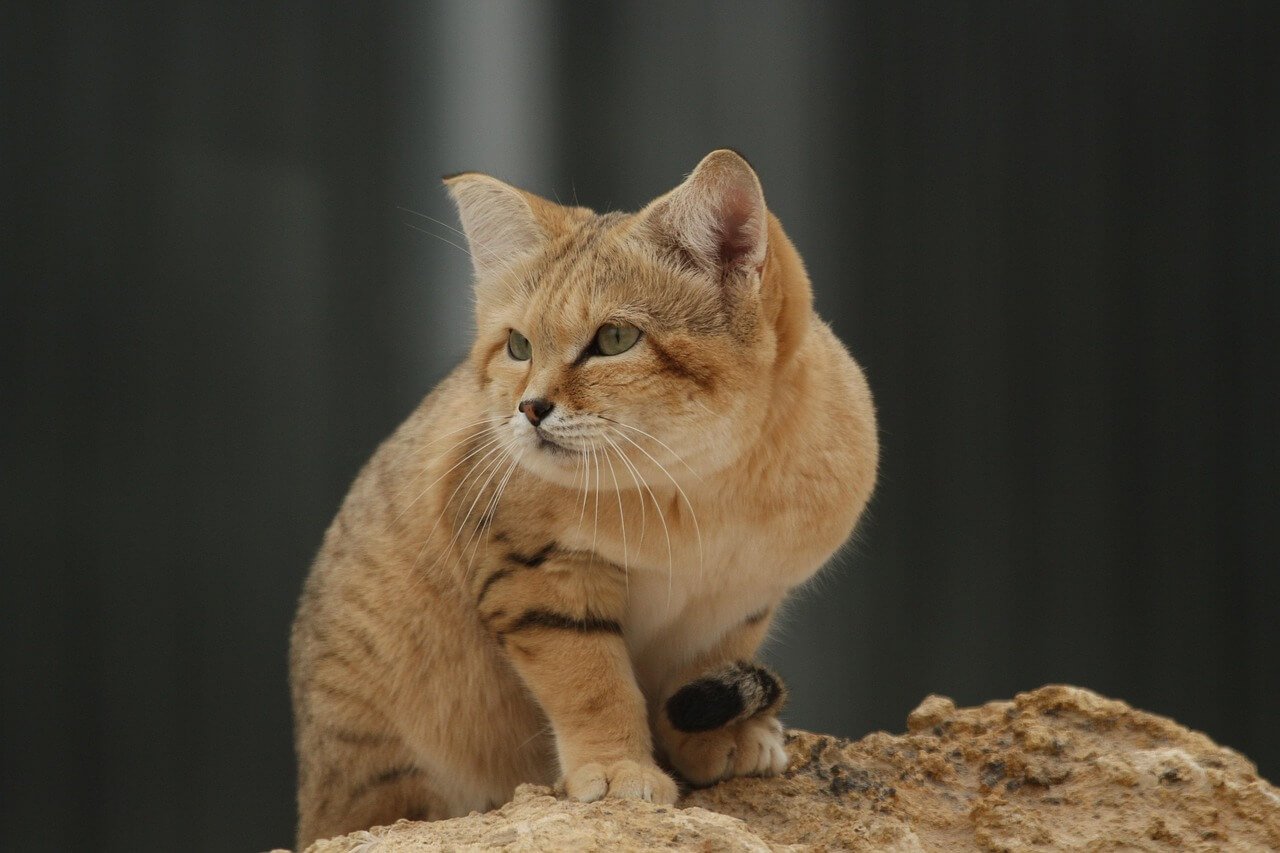Feline Leukemia and Skin Sores: What Cat Owners Need to Know
Feline leukemia virus (FeLV) is a serious condition that affects many cats worldwide, weakening their immune systems and leaving them vulnerable to various health issues. One of the more visible and concerning symptoms of feline leukemia is the development of skin sores. These sores can be painful for your cat and distressing for you as a pet owner. Understanding the connection between feline leukemia and skin sores is crucial for providing proper care and improving your cat’s quality of life.
In this blog post, we’ll explore the causes, symptoms, and treatment options for skin sores in cats with feline leukemia, as well as tips for managing this challenging condition. Let’s dive in and empower ourselves with knowledge to support our feline friends.
Causes of Skin Sores in Cats with Feline Leukemia
Skin sores in cats with feline leukemia are often a result of the virus compromising their immune system, making them more susceptible to infections and other complications. Here are some common causes of these sores:
Weakened Immune System
Feline leukemia suppresses the immune system, leaving cats unable to fight off bacteria, fungi, or viruses that can cause skin infections.Secondary Infections
Bacterial or fungal infections can develop due to the cat’s inability to heal minor wounds or scratches effectively.Allergic Reactions
Cats with FeLV may experience heightened sensitivity to environmental allergens, leading to irritated and sore skin.Parasites
Fleas, mites, or ticks can cause severe skin irritation and sores in immunocompromised cats.Chronic Stress or Anxiety
Stress can exacerbate skin conditions, and cats with FeLV may experience increased anxiety due to discomfort or illness.
Understanding these causes can help you take proactive steps to prevent or manage skin sores in your cat. Addressing the root issue is key to ensuring your feline companion feels comfortable and healthy.
Symptoms of Skin Sores in Cats with Feline Leukemia
Identifying skin sores early is essential for minimizing discomfort and preventing further complications. Here are some common symptoms to watch for if your cat has feline leukemia:
Red, Inflamed Patches
Areas of redness or swelling on the skin may indicate an infection or allergic reaction.Crusty or Scabby Lesions
Sores that appear crusty or scabbed over can signal chronic irritation or a bacterial infection.Hair Loss
Patches of hair loss around the sores may occur due to excessive scratching or licking.Oozing or Bleeding Wounds
Open sores that ooze pus or blood require immediate attention, as they can become infected.Behavioral Changes
Increased irritability, lethargy, or reluctance to be touched may accompany painful skin sores.
If you notice any of these symptoms, it’s important to consult your veterinarian promptly. Early intervention can make a significant difference in your cat’s comfort and recovery.
Check this guide 👉Understanding Cat Skin Conditions: Best 7 Health Tips!
Check this guide 👉How Can I Soothe My Cats Itchy Skin? Best 7 Health Tips!

Causes of Skin Sores in FeLV Cats | Symptoms of Skin Sores in FeLV Cats |
|---|---|
Weakened immune system | Red, inflamed patches |
Secondary infections | Crusty or scabby lesions |
Allergic reactions | Hair loss |
Parasites (fleas, mites, ticks) | Oozing or bleeding wounds |
Chronic stress or anxiety | Behavioral changes |
Treatment Options for Skin Sores in Cats with Feline Leukemia
While there is no cure for feline leukemia, managing skin sores can significantly improve your cat’s quality of life. Here are some treatment options your veterinarian might recommend:
Antibiotics
Prescribed antibiotics can help treat bacterial infections causing or worsening the skin sores.Antifungal Medications
If a fungal infection is present, antifungal treatments may be necessary to clear up the sores.Topical Treatments
Medicated creams or ointments can soothe irritated skin and promote healing.Parasite Control
Flea and tick prevention products can eliminate parasites contributing to skin irritation.Dietary Adjustments
A nutrient-rich diet can support your cat’s immune system and aid in faster healing.
With the right combination of treatments, you can help your cat feel more comfortable and reduce the severity of their skin sores. Always follow your vet’s recommendations for the best results.
Preventive Measures to Reduce Skin Sores in FeLV Cats
Prevention plays a critical role in managing feline leukemia and its associated symptoms, including skin sores. Here are some practical steps you can take to minimize the risk:
Regular Vet Check-Ups
Routine veterinary visits allow for early detection of potential issues before they worsen.Maintain Good Hygiene
Keep your cat’s living area clean and free of irritants like dust or mold.Minimize Stress
Create a calm environment to reduce stress, which can weaken the immune system further.Monitor for Parasites
Regularly check your cat for fleas, ticks, or mites and use preventive treatments as recommended by your vet.Provide a Balanced Diet
Nutritious food supports overall health and strengthens your cat’s ability to fight off infections.
By taking these preventive measures, you can help reduce the likelihood of skin sores and improve your cat’s well-being. Prevention is always better than dealing with complications later.
Signs of Progress in Managing Skin Sores
Managing skin sores in cats with feline leukemia requires consistent care and observation. Over time, you may notice improvements that indicate your efforts are paying off. Here are some positive signs to look for:
Reduced Redness and Swelling
If the affected areas appear less inflamed, it’s a good sign that the treatment is working effectively.Healing Wounds
Sores that are closing up or scabbing over indicate progress in the healing process.Improved Coat Condition
A healthier-looking coat with reduced hair loss suggests your cat’s skin is recovering.Decreased Licking or Scratching
Less frequent licking or scratching of the sores reflects reduced discomfort and irritation.Increased Energy Levels
A more active and playful demeanor often accompanies improved overall health.
These signs of progress are encouraging and show that your care routine is making a difference. Continue to monitor your cat’s condition and celebrate small victories along the way.
Common Mistakes to Avoid When Treating Skin Sores
While treating skin sores in cats with feline leukemia, it’s easy to make mistakes that could delay recovery or worsen the condition. Being aware of these pitfalls can help you provide better care. Here are some common mistakes to avoid:
Skipping Vet Appointments
Missing follow-up visits can delay necessary adjustments to your cat’s treatment plan.Using Over-the-Counter Human Medications
Applying human creams or ointments can irritate your cat’s sensitive skin and cause further harm.Neglecting Hygiene
Failing to keep your cat’s bedding or living area clean can lead to reinfection or prolonged irritation.Overlooking Diet
Ignoring the importance of a balanced diet can hinder your cat’s immune system and slow down healing.Not Monitoring for Parasites
Assuming parasites aren’t an issue can allow infestations to persist, worsening skin sores.
Avoiding these mistakes ensures your cat receives the best possible care. Always prioritize professional guidance and maintain a proactive approach.
Ways to Boost Your Cat’s Immune System Naturally
While feline leukemia weakens the immune system, there are natural ways to support your cat’s overall health and resilience. Strengthening their immune system can aid in managing skin sores and other symptoms. Here are some effective strategies:
Provide Antioxidant-Rich Foods
Foods high in antioxidants, like blueberries or specially formulated cat supplements, can help combat oxidative stress.Incorporate Omega-3 Fatty Acids
Omega-3s, found in fish oil, promote healthy skin and reduce inflammation.Ensure Adequate Hydration
Proper hydration supports detoxification and overall immune function.Offer Herbal Supplements (with Vet Approval)
Certain herbs, like echinacea or milk thistle, may support immune health when used under veterinary supervision.Minimize Environmental Toxins
Reduce exposure to harmful chemicals, such as cleaning products or air fresheners, that can stress your cat’s immune system.
By incorporating these practices, you can naturally bolster your cat’s immune system and improve their ability to fight infections. Always consult your vet before introducing new supplements or dietary changes.
Frequently Asked Questions About Feline Leukemia and Skin Sores
Can feline leukemia cause skin problems?
Yes, feline leukemia can lead to skin sores due to a weakened immune system and secondary infections.
Are skin sores in FeLV cats contagious?
While the sores themselves aren’t contagious, underlying infections or parasites could potentially spread to other pets.
How can I relieve my cat’s discomfort from skin sores?
Consult your vet for treatments such as medicated creams, antibiotics, or pain relief options.
Can a cat recover from skin sores caused by FeLV?
With proper care and treatment, skin sores can heal, but ongoing management is often necessary due to the chronic nature of FeLV.
Should I isolate my FeLV-positive cat from other pets?
It’s advisable to keep FeLV-positive cats separate from non-infected cats to prevent transmission of the virus.
Supporting Your Feline Friend Through Feline Leukemia
Living with a cat diagnosed with feline leukemia can be challenging, especially when symptoms like skin sores arise. However, with patience, love, and the right care, you can help your cat live a comfortable and fulfilling life. By staying informed about the causes, symptoms, and treatments for skin sores, you’re taking an active role in your cat’s well-being. Remember, every small effort counts—whether it’s maintaining hygiene, providing a nutritious diet, or simply offering extra cuddles during tough times. Together, we can ensure our feline companions feel loved and supported, even in the face of adversity.
Cat Fever Treatment: Best 7 Expert Tips! Discover expert advice on identifying, managing, and treating fever in cats to ensure their quick recovery and well-being.
Understanding Meloxicam for Cats: Best 7 Expert Tips! Learn how to safely administer meloxicam, manage side effects, and ensure your cat's comfort with expert advice on feline pain relief.
Amoxicillin for Cat UTI: Best 7 Expert Tips! Discover safe usage, dosage guidelines, and expert advice on treating feline urinary tract infections effectively with amoxicillin.
Understanding Cat Cancer Treatment: Best 7 Expert Tips! Discover expert advice on managing feline cancer, from early detection to treatment options, ensuring your cat’s health and comfort.





